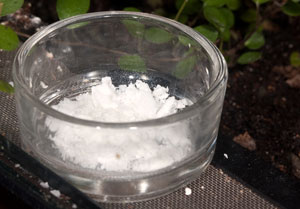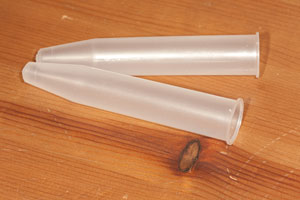As more and more people acquire Lygodactylus williamsi the desire to breed them naturally grows as well.
[ad#sponsor]
In my previous article, Lygodactylus williamsi, I mentioned that the majority of Lygodactylus williamsi in captivity today are wild caught. Since they are wild caught you will first need to condition them before breeding should ever take place.
Conditioning
Conditioning begins during the quarantine period, which is best done separately so no accidental breeding occurs.
During quarantine you should offer plenty of food, depending on the weight of the gecko. This is best done in small amounts every day or every other day for the first few weeks. In this way, you will be able to provide them with a lot of nutrients from a balanced variety of insects, alongside a trusted supplementation regimen which will be beneficial come breeding time. Once you notice your geckos have a healthy weight you can begin to reduce feedings.

During conditioning you should provide your female gecko with a small bowl of crushed up cuttlefish bone. This will help provide her with the extra calcium she will need to produce healthy eggs and stay healthy after doing so. The bowl generally should be replaced on a weekly basis. You should also take care not to place the bowl in the range of a misting area! Doing so will mean you have to replace it more frequently because the nutrient value will be lost otherwise.
It should be noted that the bowl of crushed up cuttlefish bone should be offered in addition to the usual calcium you provide while supplementing their food, as sometimes they will not take from this bowl until they are actually pregnant or generally not at all. Still it is good practice to offer it regardless!
It is also a good idea while your geckos are in quarantine to have a fecal sample checked by a licensed veterinarian in order to nip any potential parasite loads in the bud before they pose an additional threat to the condition of your female, prior to breeding her. Failure to do so could cause an increased load once she begins breeding as stress has been shown to make parasite loads higher and breeding does cause stress.
I have come across many threads in forums and posts on mailing lists where females were not allowed to be properly conditioned prior to breeding and the outcome was not pleasant. So following the above care regimen will not only spare you a headache or two, but most importantly spare your gecko or its offspring any harm.
After a period of two months your geckos should have good weight on them and your female should have good calcium reserves (easily noticeable, as they will look like little chipmunks because of the calcium pockets in their cheeks). Should your geckos still not have a good weight, do not hesitate to keep them in quarantine for a little longer.
Introduction and Breeding
Once quarantine is over you can begin introducing the two geckos together. It is best to place the female into the enclosure first and the male an hour later. Once the male is placed into the enclosure they will usually tolerate each other well within a few minutes. Sometimes there will be a bit of fighting, but this should pass within a few days. You only need to worry if they keep fighting. Should this occur you should remove the male for a few days or more and then try again.
After a successful introduction your geckos will freely begin breeding without any extra effort from you. Be sure to keep a bowl of crushed up cuttlefish bone handy in the tank at all times.

Lygodactylus williamsi generally like to paste their eggs. A nifty trick I use is to place plastic florist tubes within the tank in various locations that would look interesting to the female. They could be placed, for example, behind bromeliads, behind pieces of cork and up towards the top of the tank. These tubes should be placed in to the vivarium before adding in the female. This is important as doing so later may cause her to not recognize them as possible egg locations prior to becoming gravid. These tubes are of a size to not only allow your gecko to enter and leave easily, but also small enough so that you can just take them directly out of the vivarium once a clutch of eggs is laid to place them in to an incubation location.
Note: Sometimes my female does not select a site I have set up for her and
I end up having to catch some babies from the tank. This is easily done by catching them in a small cup or tube (remember to approach slowly!). Babies should never be allowed to remain in with the parents as there is a possibility they may be eaten.
Incubation and Care of the Young
Once eggs have been laid it can take anywhere from 50-100 days for the eggs to hatch depending on your incubation temperatures. I mention the large span because as seasons change so will the amount of days it takes to hatch out offspring.
I usually incubate my eggs between 72-81F (with the lowest number being at night) and have found these temperatures to be fail-proof in producing healthy hatchlings. Following this range my eggs hatch between 50-80 days throughout the year.
On the day your eggs hatch you can place the offspring in a terrarium you have set up prior to their arrival. It should be set up like the parents’ enclosure (see previous article another link here). It is also very important to provide them with the same 5.0% UVB as their parents. UVB is crucial to the raising of young Lygodactylus! You can safely raise them in 5-15 gallon enclosures.
Be sure that they are escape-proof, as the young are very tiny and devious.
The same temperature guidelines as their parents should also be followed. Due to their small size, a water bowl should not be placed in to their terrarium as this may lead to drowning. Drinking water is safely provided by daily misting.
On the second to third day of life you can begin offering the young food
items. They will usually only take small drosophila (fruit fly) the first days, but may also take pinhead crickets, springtails, woodlice & small firebrats.
At an age of 6-8 months it is usually possible to sex the offspring. But some may be able to be sexed as early as 3-4 months.



Hi,
Very informative article!
Have a question about L.Williamsi babies. Currently have 3 hatchling in a nano and with about 4 other eggs waiting to hatch, I am wondering how long and how many little ones can live/grow fine in a nano exo until being able to sex them?
have a spare 30x30x45 in which am planning to move them when they get bigger and seperate them if needed.
Thank you
Tom
Hi Tom,
It really all depends. As there is two sizes of Nano tanks I would say for the one measuring 20x20x20 cm you could keep comfortably 3-4 babies, while in the 20x20x30cm you could keep maybe at max 5-6. You will need to move them to a larger tank when they reach around 4-5cm. For a 30x30x45cm you could keep 3-4 williamsi until they reach 6 months, but to do this for so long you need to be very careful especially with the males. If you can get your hands on a terrarium measuring 45x45x45cm you could comfortably house 6-7 williamsi until they reach 6 months of age. I have managed to do this a number of times now with no issues, so long as I provide many escape locations in the terrarium and plenty of food. Naturally if any of them become aggressive toward each other they would need to be moved to separate tanks, females however will always need a separate tank away from males, otherwise you risk accidental breeding.
Regards,
Maureen
Really nice geckos, good job. Very informative.
Um I have some questions….
1) where did they originate?
2) how have they adapted?
3) and how do the interact with humans?
Dear Maureen,
If I may add some additional information to the rearing of the hatchlings and the ‘ in situ ‘ conditions ?
I am in the very fortunate position of being able to have 9 pairs of the Electric Blues to begin breeding with and because of this have been able to try different rearing methods. Primarily because so many were hatching from the numerous pairings, I was forced due to a lack of ‘ hatchling tanks ‘ to try experimenting with leaving the babies in the tanks with the parents. Out of 6 pairs that I left the babies in , only one pair ( both male & female ) ate their babies upon hatching ( the tank being 18″Lx 13″wx13’H)
Although I am not advocating such a method , I also noticed certain pairs are very tolerant of the different stages of hatchlings in the tank.( In two tanks, there are five juvies of different ages of 30 days diffferences ). In the larger well planted vivariums, the juvies are extremely active and seem to grow bigger and faster than the ones raised individually in seperate tanks. Their intereaction with each other and their parents are very interesting to observe and a joy to watch in a much bigger space.Observations in the wild states one pair within a given territory alongside a few juvies.
I now have close to 40 babies with more eggs yet to hatch. I thought I would mention this to you as I have never seen anybody mention such similar experiences in their breeding program.
Sincerely,
Stuart
I have a baby electric blue, and I have already separated her from the mother. I was wondering what would be an appropriate sized tank for her? And when would I be able to put them together?
Some people keep them in 32oz deli cups with the holes and gauze on top. Others keep them in an exo-terra nano (8″x8″x12″). There’s very extensive thread on geckosunlimited.com about how to keep hatchling L. williamsi –do a search there. Theoretically the hatchling can be kept with the mother when she’s approx. the same size, but these geckos can be territorial.